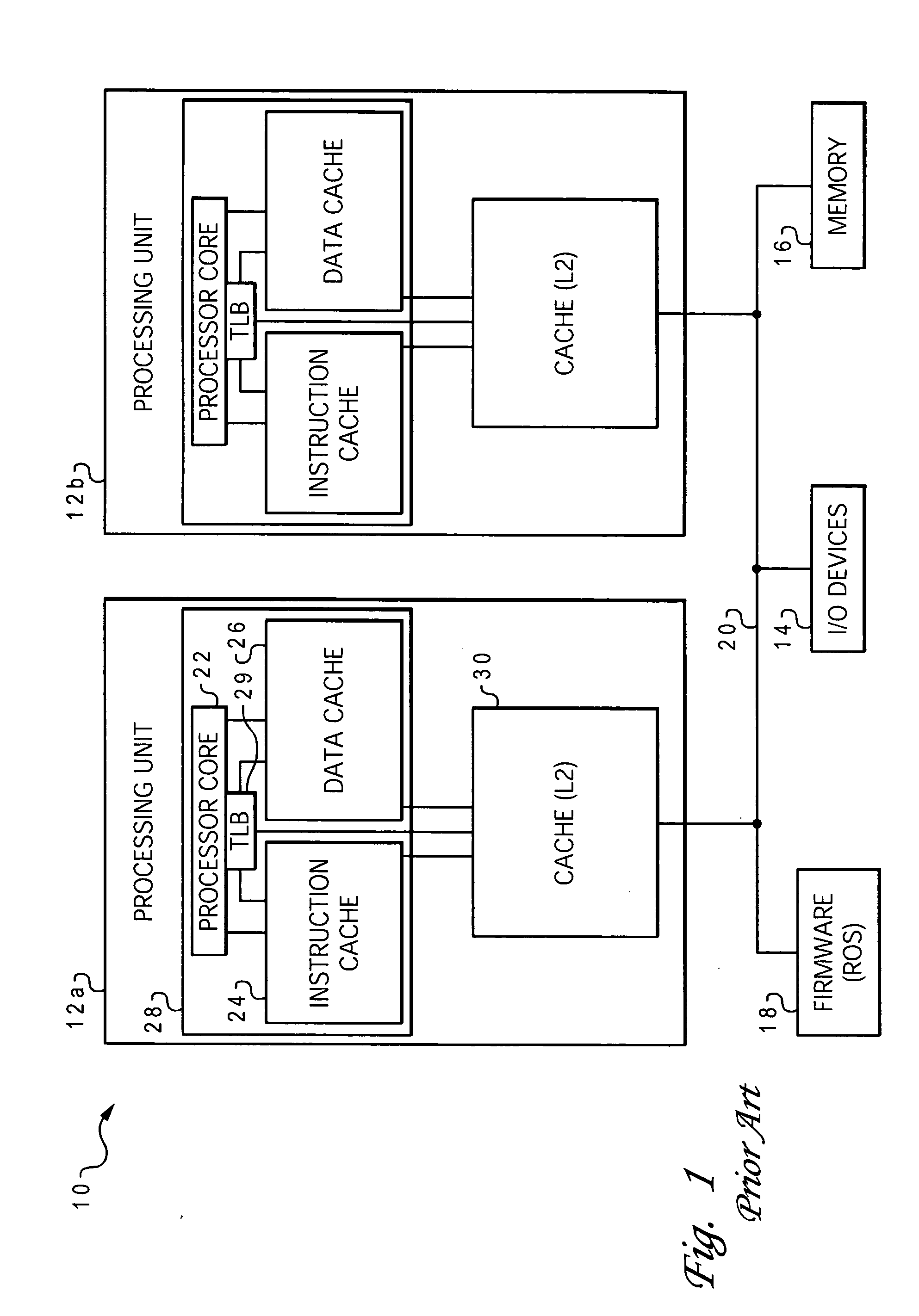Hardware support for superpage coalescing
a superpage coalescing and hardware technology, applied in the field of computer systems, can solve the problems of inability to efficiently co-create pages, and inability to meet the needs of users, so as to facilitate efficient co-creation and reduce latentities associated with page copying
- Summary
- Abstract
- Description
- Claims
- Application Information
AI Technical Summary
Benefits of technology
Problems solved by technology
Method used
Image
Examples
Embodiment Construction
)
[0029] With reference now to the figures, and in particular with reference to FIG. 3, there is depicted one embodiment 40 of a memory subsystem constructed in accordance with the present invention. Memory subsystem 40 is generally comprised of a memory controller 42 and a system or main memory array 44, and is adapted to facilitate superpage coalescing for an operating system which controls virtual-to-physical page mappings in a data processing system. The operating system (OS) may have many conventional features including appropriate software which determines page mappings, and decides when it is desirable to coalesce pages into a larger (super)page; such details are beyond the scope of the present invention but will become apparent to those skilled in the art.
[0030] Memory subsystem 40 provides a hardware solution to superpage coalescing which reduces or eliminates the poor TLB behavior that occurs during the prior art software-directed copying solution. In the present invention...
PUM
 Login to View More
Login to View More Abstract
Description
Claims
Application Information
 Login to View More
Login to View More - R&D
- Intellectual Property
- Life Sciences
- Materials
- Tech Scout
- Unparalleled Data Quality
- Higher Quality Content
- 60% Fewer Hallucinations
Browse by: Latest US Patents, China's latest patents, Technical Efficacy Thesaurus, Application Domain, Technology Topic, Popular Technical Reports.
© 2025 PatSnap. All rights reserved.Legal|Privacy policy|Modern Slavery Act Transparency Statement|Sitemap|About US| Contact US: help@patsnap.com



